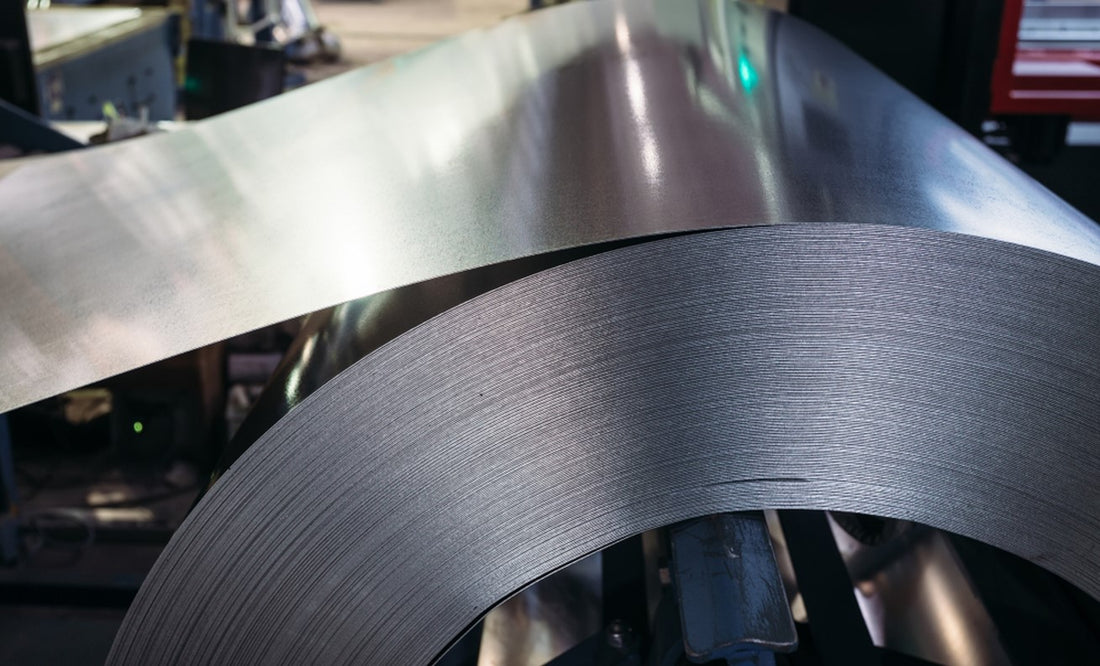Ecenrode Welding Supply is a one-stop shop for all your welding and metallurgy needs. We have a plethora of alloys, abrasives, cutting equipment, supplies to keep you safe, and more.
In this article, we will cover a specific type of welding: galvanized steel.
Before beginning, we must stress that welding galvanized steel is inherently dangerous because of the fumes produced from working with and burning zinc. You must practice all the safety measures we provide here and do your own research and adopt those practices.
Now that we have that out of the way, let’s begin.
Understanding Galvanized Steel
So what exactly is galvanized steel, and how is it different from standard regular steel?
The answer is quite simple: you simply add zinc. This offers protection and prevents the steel from rusting. Galvanized steel is highly durable, has superior strength and formability, and has robust corrosion protection from zinc.
For these reasons, it’s a popular choice in metallurgy jobs. The zinc coating blocks corrosive elements and reinforces and enhances the base metal’s intrinsic properties.
Let’s now walk through the process of galvanizing steel.
- Clean the bare steel in a degreasing solution.
- Once the bare steel is cleaned, dunk it in a vat of hot sulfuric acid (diluted).
- Flux (simply means the process of cleaning/purifying) the steel in an aqueous (water-based) solution (usually zinc-ammonium chloride).
- You’re now ready to galvanize the steel. The prepared steel goes into a vat of molten zinc and is immersed there.
- The final step is to thoroughly inspect the newly-galvanized steel for consistency and completeness.
In terms of uses, galvanized steel has applications across several industries. These include automotive, industrial, agricultural, and construction settings.
Preparing to Weld Galvanized Steel
Safety Precautions: Read Carefully!
First, some context. The first things to remember are proper care and maintenance of your galvanized steel. The following are crucial guidelines in this regard
- Do not expose galvanized steel to conditions between pH 6-12. This level of acidity will cause corrosion.
- Galvanized steel should never come into contact with dissimilar metals; that is to say, copper and brass – particularly in corrosive environments.
- Do not wash or clean galvanized steel with abrasives. The thin layer of insoluble fiber along the zinc coating – called a patina – may get scrubbed off, leaving more zinc to be consumed, shorter shelf life, and more hazardous conditions.
- Regularly rinse the steel with potable water if you work in corrosive environments, such as coastal or industrial settings. Do not expose galvanized steel to the elements.
- Keep the galvanized steel in a very well-ventilated environment—more on this soon.
Here are some health issues for you to be aware of:
- Fever from metal fumes. This can happen in the process of vaporizing the zinc coating. The resultant zinc oxide fumes are toxic. It can lead to what’s called metal fume fever. Symptoms include nausea, headache, fever, and chills. Though these are only short-term effects, it is your job to mitigate them as much as possible. Get the best PPE possible to breathe the minimum amount of ambient air you can.
- Longer-term health concerns. The zinc coating contains a small amount of lead. Fumes made of lead oxide are not only toxic but dangerous. Inhaling lead oxide fumes can lead to brain cancer, lung cancer, and nervous symptom complications. Wear the proper PPE!
-
Be appropriately trained and, again, don the proper safety gear. Safety training cannot be overstated. Keep the welding shield and your face away from resultant fumes. Maintain a proper position relative to the weld to maximize clean airflow. The safety gear you’ll need includes:
- A high-quality, industrial-grade respirator mask
- Industrial-strength, heat-resistant welding gloves
- Welding helmet
- Safety boots
- Leather jacket

Surface Preparation
We’ve covered most of this, but for your convenience, here’s a brief step-by-step guide to preparing your surface to weld galvanized steel:
- Degrease the steel to remove organic contaminants.
- Pickle the steel. Use hydrochloric or sulfuric acid.
- Flux the steel. This cleans out all of the oxidation from Step 2.
The Welding Process
Once the zinc coating is formed correctly, you should do the following:
- Place the steel pieces you’ll be working with on your work surface in the proper orientation and arrangement.
- Clamp the pieces together using a welding clamp.
- You can now start welding. The standard and most common way to weld is arc welding, which produces currents that melt the flux quickly.
- Next, select your welding rod. You should determine its size based on the overall size of your steel. Rods for welding galvanized steel do not differ from those for standard steel operations.
- Weld!
Post-Welding
After welding is complete, you should do a couple of things. First, apply some zinc touch-up material to the bead of the weld. Do this for the adjacent areas as well. This completes the corrosion resistance process.
FAQs
1. Is welding galvanized steel safe?
Intrinsically, doing metallurgical work with galvanized steel presents some severe health risks. Metal fever is a common side effect of this work and should be avoided to the largest extent possible. While these are short-term effects, chronic zinc and lead oxide exposure can kill you.
Don’t be alarmed, however. There are plenty of safety instructions and parameters in this article. Make sure to follow them and do a lot of your own research, get properly trained, and use the proper PPE.
2. Can you weld galvanized steel without the zinc coating?
Absolutely not; the zinc coating is what makes the steel galvanized.
3. What does “flux” mean in the context of welding galvanized steel?
Fluxing removes the oxide film resulting from acid cleaning.

Final Thoughts
Ecenrode Welds has got you covered for your galvanized steel welding needs. Come by our shop or visit our website today for your proper equipment.

